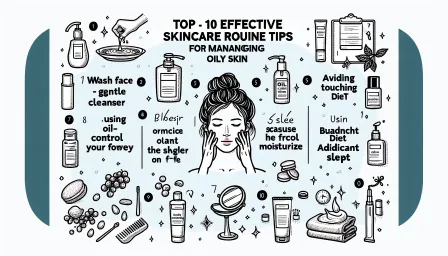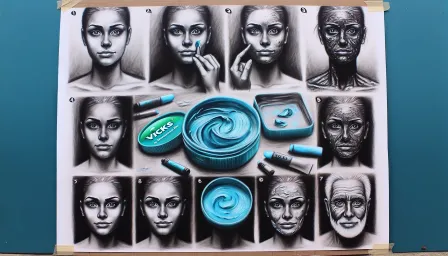How to Use Retinol: A Comprehensive Guide for Beginners

Discover how to use retinol effectively with our comprehensive guide for beginners. Learn about its benefits, application tips, and common mistakes to avoid.
Retinol, a derivative of vitamin A, is widely praised for its numerous skin benefits. However, incorrect usage can lead to irritation and other issues. This comprehensive guide will help you understand how to use retinol effectively and safely for optimal results.
What is Retinol?
Retinol is a type of retinoid, which is a class of compounds derived from vitamin A. It's known for its powerful ability to promote cell turnover, reduce wrinkles, fight acne, and improve overall skin texture and tone. As a non-prescription form, it is widely available in various over-the-counter skincare products.
Benefits of Using Retinol
Incorporating retinol into your skincare routine can provide a multitude of benefits, including:
- Anti-Aging: Helps reduce the appearance of fine lines and wrinkles by accelerating cell turnover and promoting collagen production.
- Acne Treatment: Helps unclog pores, reduce breakouts, and diminish acne scars.
- Even Skin Tone: Fades hyperpigmentation and dark spots, resulting in a more even skin tone.
- Improved Texture: Smooths rough patches and enhances skin texture.
How to Use Retinol Correctly
To maximize the benefits of retinol while minimizing potential side effects, follow these steps:
1. Start Slowly
If you're new to retinol, it's crucial to start with a low concentration product (around 0.25% to 0.5%) and gradually build up your tolerance. Apply retinol once or twice a week at first, then slowly increase the frequency as your skin adjusts.
2. Apply at Night
Retinol can make your skin more sensitive to sunlight, so it's best to use it in your nighttime skincare routine. Always follow up with sunscreen during the day to protect your skin from UV damage.
3. Cleanse and Dry Your Skin
Cleanse your face thoroughly and ensure your skin is completely dry before applying retinol. Applying on damp skin can increase the potency and potential irritation.
4. Use a Pea-Sized Amount
Apply a pea-sized amount of retinol to your face, avoiding the eye and mouth areas. Using more does not mean better results and can increase the risk of irritation.
5. Moisturize Well
Retinol can be drying, so it's important to use a good moisturizer afterward. This can help to soothe and hydrate your skin.
6. Be Patient
It might take several weeks to notice significant improvements in your skin. Consistency and patience are key when using retinol.
Common Mistakes to Avoid
Overusing Retinol
Too much retinol can lead to red, irritated, and peeling skin. Stick to the recommended usage frequency and adjust based on your skin's tolerance.
Skipping Sunscreen
Since retinol increases sun sensitivity, neglecting sunscreen can result in sunburn and increased risk of UV damage. Always apply a broad-spectrum sunscreen daily.
Combining with Other Actives
Using other potent active ingredients like AHAs, BHAs, or vitamin C alongside retinol can increase the risk of irritation. Introduce them into your routine one at a time, or consult with a dermatologist for advice.
Who Should Avoid Retinol?
While retinol is beneficial for many, certain individuals should exercise caution or avoid it altogether:
- Pregnant or Breastfeeding Women: Consult with a healthcare provider before using retinol during pregnancy or nursing.
- People with Sensitive Skin: Those with extremely sensitive skin or conditions like eczema or rosacea may experience adverse reactions.
- Individuals Using Certain Medications: Some medical treatments or medications may interact with retinol. Always consult with a healthcare professional.
Alternatives to Retinol
If retinol is not suitable for you, consider these alternatives:
- Bakuchiol: A natural, plant-based ingredient that offers similar benefits without the potential irritation.
- Peptides: Help boost collagen production and improve skin texture.
- Niacinamide: Soothes and improves overall skin health, reducing the appearance of fine lines and pores.
Conclusion
Understanding how to use retinol properly can lead to significant improvements in your skin’s appearance and health. Starting slowly, applying at night, moisturizing well, and being patient are key steps to incorporating retinol into your skincare routine. Be mindful of common mistakes, and consult with a skincare professional if you have any concerns or specific conditions.
By following this comprehensive guide, you can enjoy the remarkable benefits of retinol safely and effectively.



























